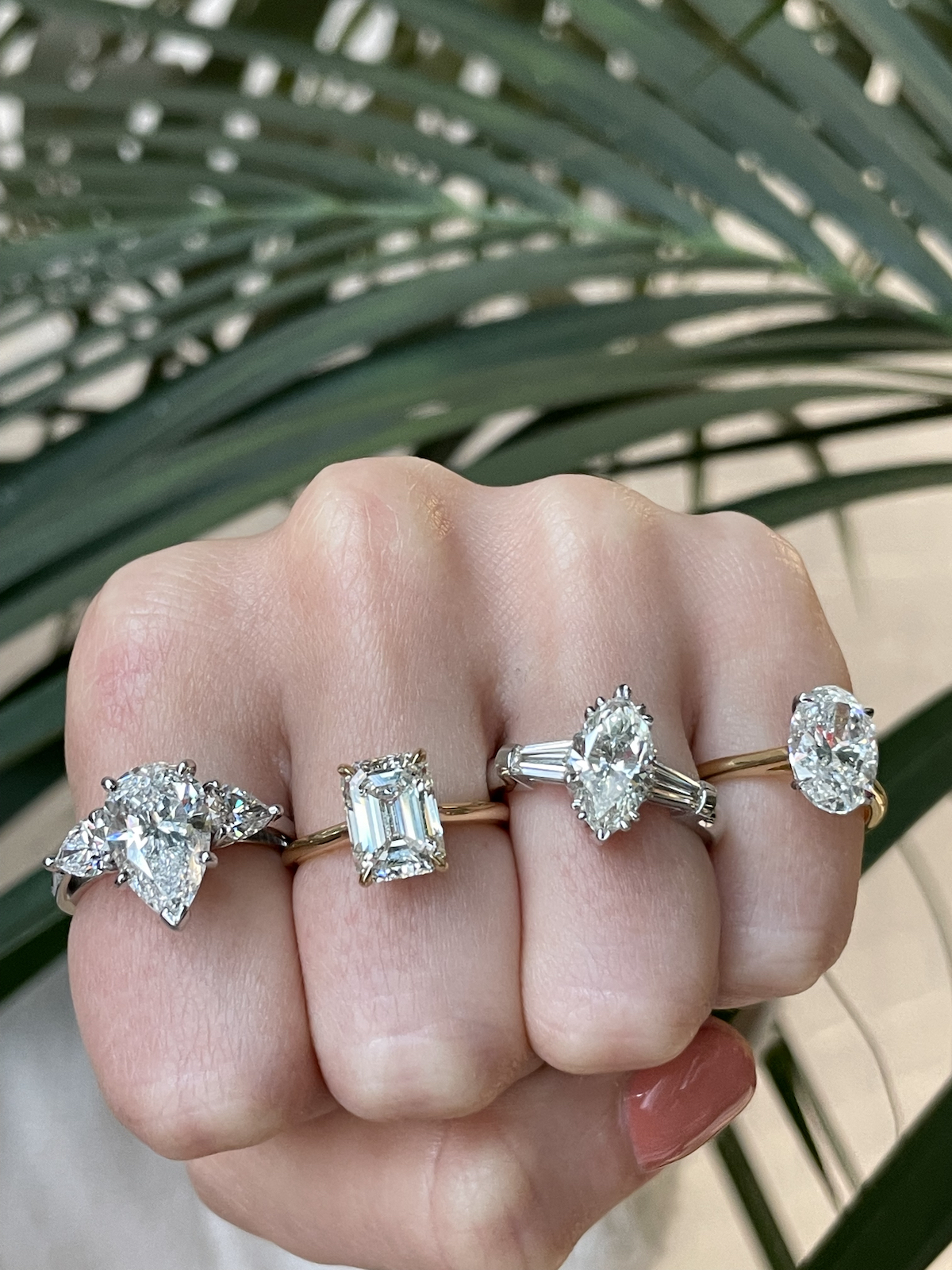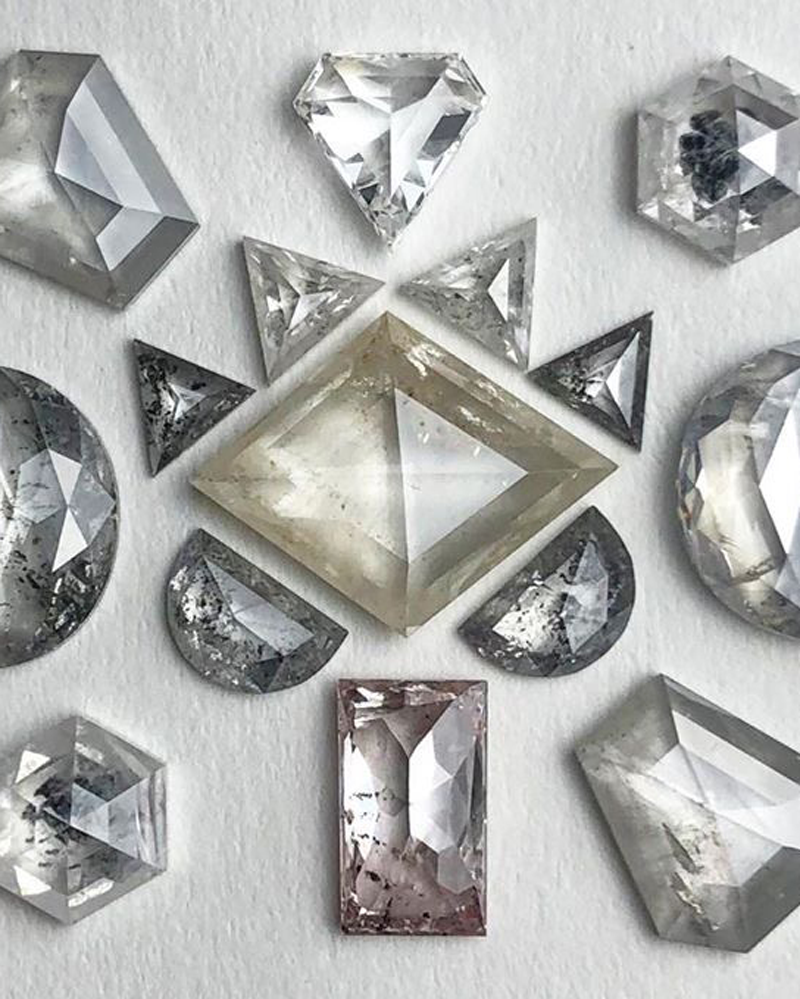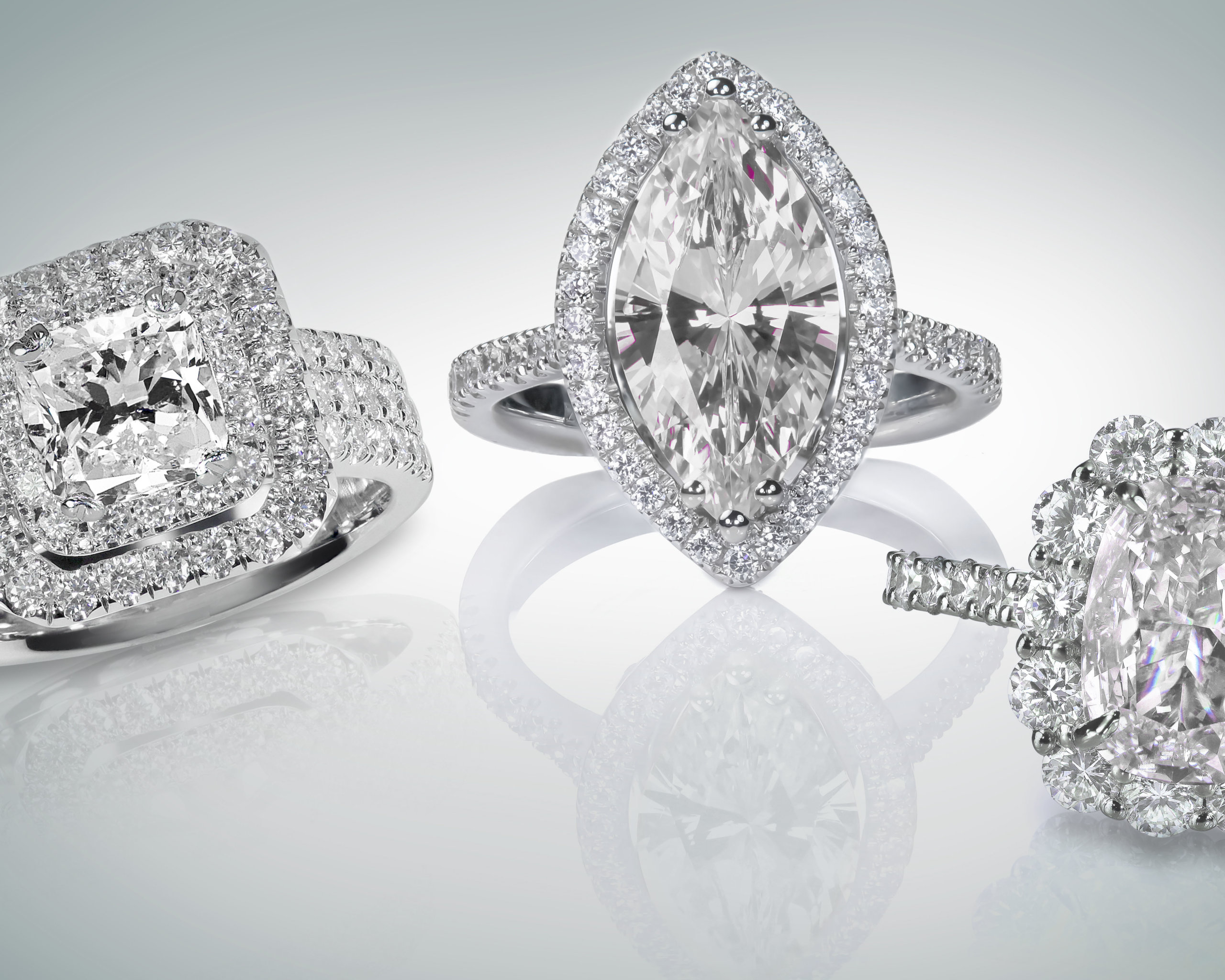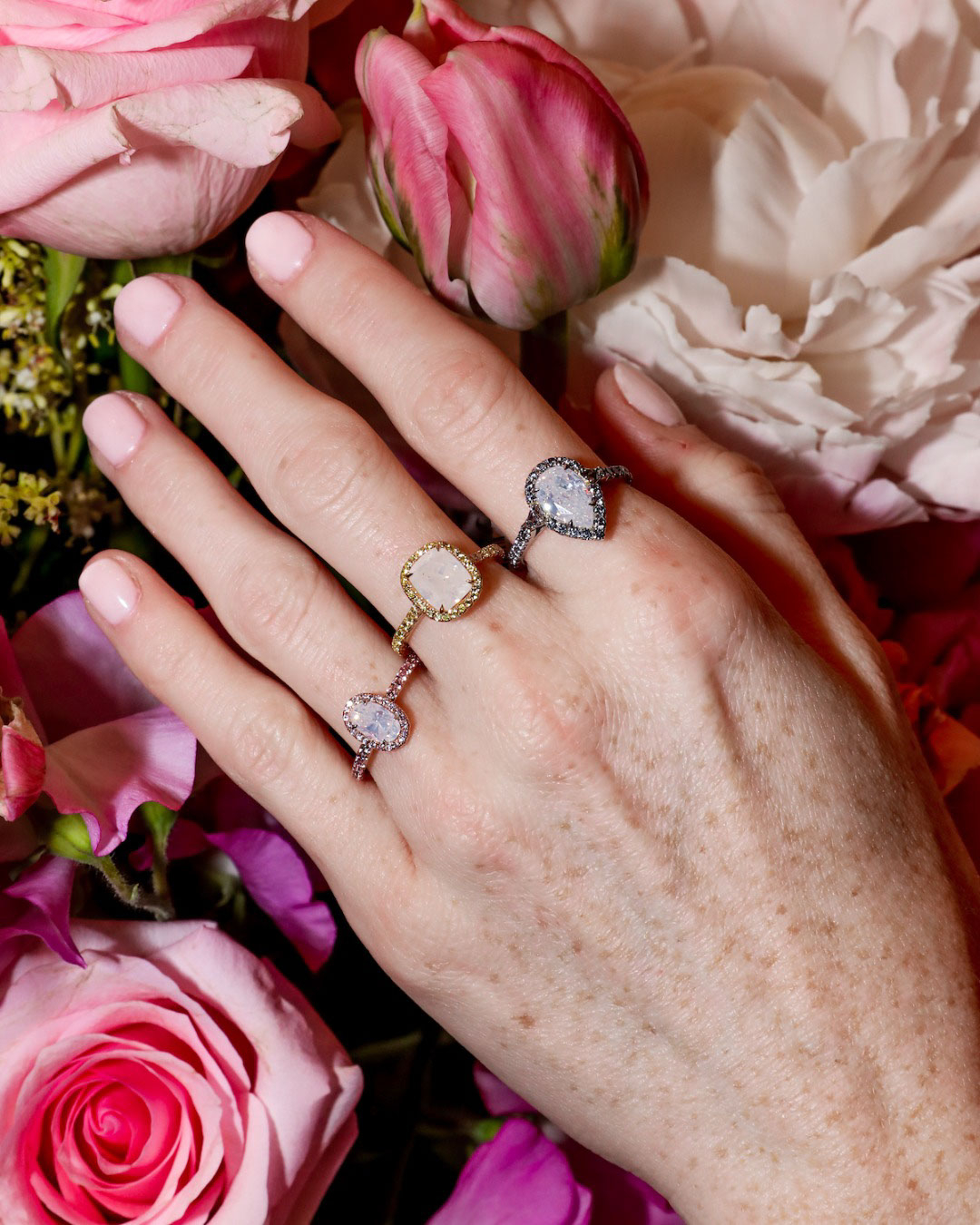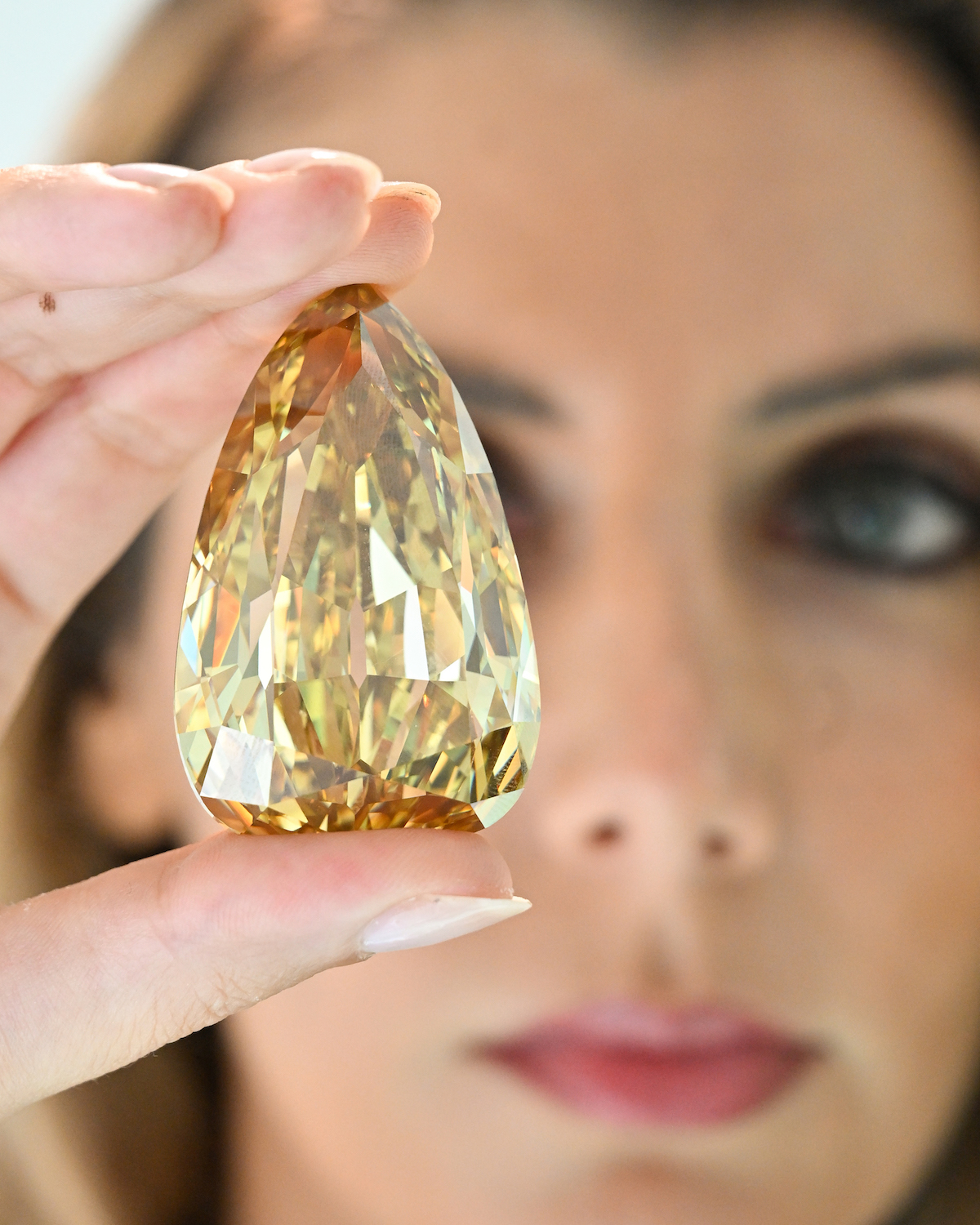A diamond’s clarity plays a key role in both its appearance and value, and the diamond clarity chart—developed by the Gemological Institute of America (GIA)—serves as the industry standard for grading a diamond’s purity. This scale ranges from Flawless (FL) to Included (I1-I3), helping buyers understand the presence of inclusions (internal flaws) and blemishes (external flaws).
What is the Diamond Clarity Chart?
The diamond clarity chart, created by the Gemological Institute of America (GIA), is the universal standard for evaluating a diamond’s internal and external characteristics. This grading scale assesses the size, type, and visibility of inclusions (internal flaws) and blemishes (surface imperfections) under 10x magnification.
Clarity grades range from Flawless (FL)—with no visible inclusions or blemishes—even under magnification, to Included (I1-I3), where imperfections may be noticeable to the naked eye. Understanding these grades can help buyers choose a diamond that balances beauty, value, and budget while still appearing clear to the naked eye.
The Diamond Clarity Chart Categories
The diamond clarity chart is divided into six categories, ranging from Flawless (FL) to Included (I1-I3), each reflecting the number, size, and visibility of a diamond’s inclusions and blemishes under 10x magnification. Below, find a breakdown of each of the categories and when they are best applied.
1. Flawless (FL):
No inclusions or blemishes visible under 10x magnification.
2. Internally Flawless (IF)
No inclusions or blemishes visible under 10x magnification.
3. Very, Very Slightly Included (VVS1, VVS2):
Minute inclusions are difficult to detect even under magnification.
3. Very Slightly Included (VS1, VS2):
Inclusions are minor and difficult to detect under 10x magnification.
5. Slightly Included (SI1, SI2):
Inclusions are visible under magnification and may be visible to the naked eye in SI2.
6. Included (I1, I2, I3):
Inclusions are visible to the naked eye and may affect the diamond’s appearance and durability.
Flawless (FL)
A Flawless diamond with no inclusions or blemishes visible under 10x magnification. These diamonds are extremely rare and highly valuable, making them one of the most sought-after clarity grades.
Best For: Those seeking the highest quality and rarity, with no visible flaws.
Internally Flawless (IF)
An Internally Flawless (IF) diamond has no inclusions but may have minor surface blemishes visible under 10x magnification. These diamonds are nearly identical to Flawless (FL) diamonds but are slightly more available.
Best For: Buyers who want a near-perfect diamond without the premium price of an FL grade.
Very Slightly Included (VVS1 & VVS2)
VVS1: Inclusions are extremely difficult to see under 10x magnification.
VVS2: Inclusions are slightly easier to detect but still not visible to the naked eye.
Best For: Those who want an exceptionally clean diamond without paying for an FL or IF stone.
Slightly Included (VS1 & VS2)
VS1: Inclusions are difficult to see under 10x magnification.
VS2: Inclusions are slightly more visible but usually not noticeable without magnification.
Best For: Buyers looking for a high-quality diamond with minimal imperfections that don’t affect brilliance.
Slightly Included (SI1 & SI2)
SI1: Inclusions may be noticeable under 10x magnification but rarely visible to the naked eye.
SI2: Inclusions can be more apparent, sometimes visible to the naked eye in certain lighting.
Best For: Those who want a balance between quality and affordability, especially in round brilliant cuts, which hide inclusions better.
Included (I1, I2, I3)
I1: Inclusions are visible to the naked eye and may impact brilliance.
I2 & I3: Inclusions are obvious, can affect durability, and reduce light performance.
Best For: Budget-conscious buyers who prioritize carat size over clarity, or those selecting deeply colored fancy diamonds where inclusions are less noticeable.
How Diamond Clarity Affects Price
The diamond clarity chart significantly influences a diamond’s price. Flawless (FL) and Internally Flawless (IF) diamonds are the most expensive due to their rarity, while Included (I1-I3) diamonds are more affordable but may compromise appearance and durability.
However, a well-cut diamond with a lower clarity grade can still appear stunning, as cut quality and brilliance can mask some inclusions. VS2 and SI1 diamonds offer excellent value, providing near-eye-clean clarity without the premium price tag.
Choosing the Best Diamond Clarity for Your Needs
Selecting the right clarity grade depends on your personal preference, budget, and the type of diamond cut. Below, find expert tips on how to make the best choice for you.
Consider the Diamond Shape
Brilliant Cuts (Round, Oval, Cushion, Princess): These cuts reflect more light and hide inclusions better, allowing for a lower clarity grade (SI1 or even SI2). Step Cuts (Emerald, Asscher, Baguette): These have larger, open facets that make inclusions more visible, so a higher clarity grade (VS1 or better) is recommended.
Think About Diamond Size
Larger diamonds (1.5 carats or more) tend to show inclusions more easily. Choosing a VS2 or better grade can ensure a cleaner look. Smaller diamonds (under 1 carat) may not require a high clarity grade, as inclusions are harder to detect.
Prioritize Cut
Prioritize cut over clarity, as an excellent cut can make even a lower-clarity diamond appear more dazzling.
Check for Eye-Clean Diamonds
Instead of fixating on a high clarity grade, look for an eye-clean diamond—one where inclusions are not visible without magnification. VS2 and SI1 diamonds often appear flawless to the naked eye but cost significantly less than FL or VVS diamonds.
Buy from Reputable Sources with Certification
Ensure your diamond comes with a GIA or AGS certification, which provides an accurate and unbiased clarity grade.
Diamonds the Diamond Clarity Chart Does Not Apply to
While the diamond clarity chart is a widely used standard, it does not apply to fancy color diamonds. These diamonds—such as blue, pink, yellow, and green varieties—are graded primarily based on their color intensity and saturation, rather than their clarity. Inclusions in fancy color diamonds are often less scrutinized because they can sometimes enhance the stone’s depth and uniqueness.
Thinking Beyond the Diamond Clarity Chart
While the diamond clarity chart is a helpful guideline, it’s important to remember that clarity is just one aspect of a diamond’s beauty. Many inclusions are microscopic and have little impact on how a diamond appears to the naked eye. Some buyers prioritize size, cut, or color over clarity, as these factors often contribute more to a diamond’s overall brilliance and presence. Instead of solely focusing on clarity grades, consider what looks best to you and aligns with your personal preferences and budget. An “eye-clean” SI1 diamond can be just as stunning as a VVS1 diamond when set in the right way.
Additionally, inclusions are a part of Earth’s history, formed over millions of years, making each diamond uniquely its own. These natural imperfections can add character and individuality to a stone, making it truly one of a kind. Some collectors and gem enthusiasts even appreciate inclusions as a testament to a diamond’s natural origin and journey through time.

